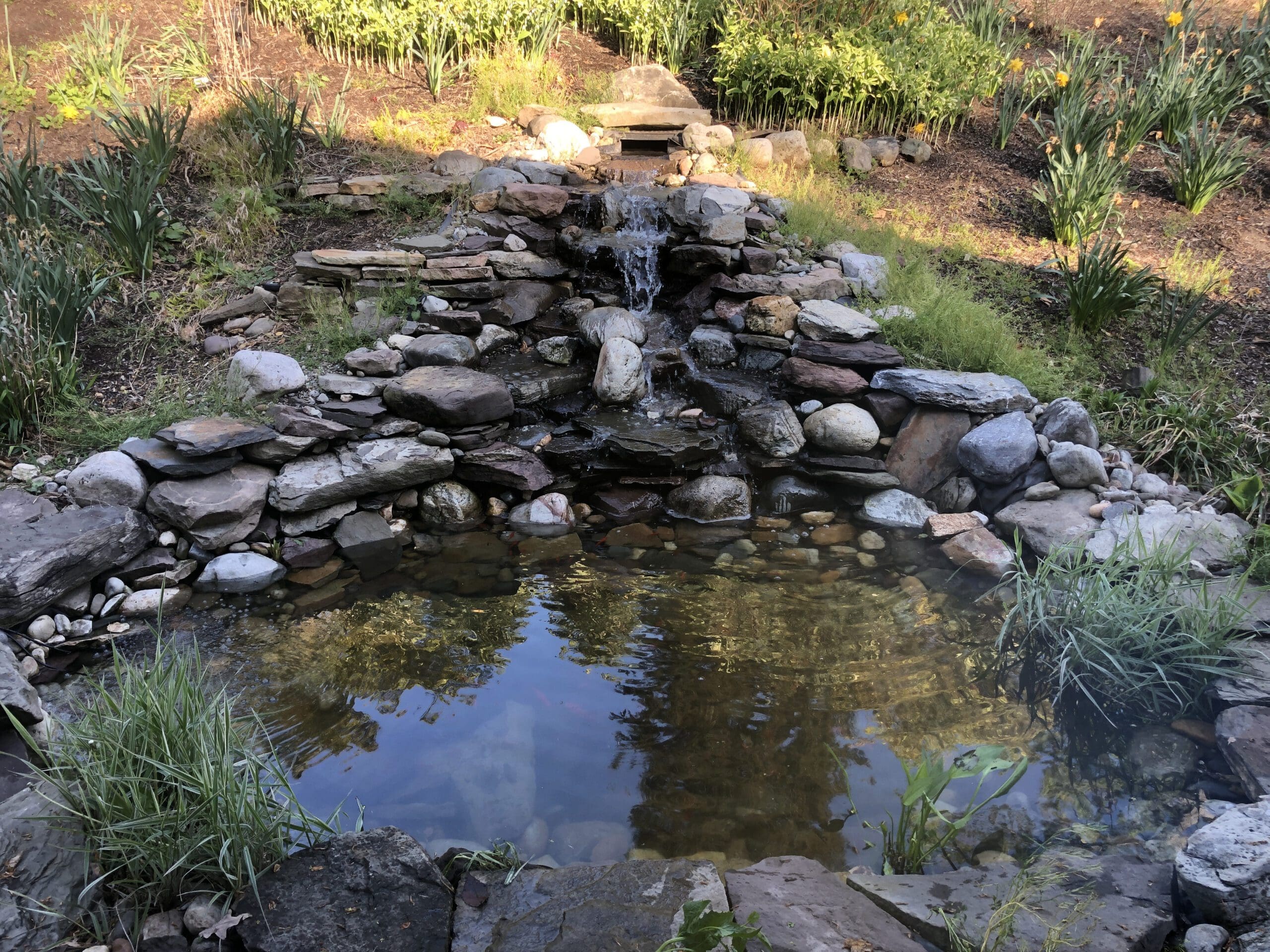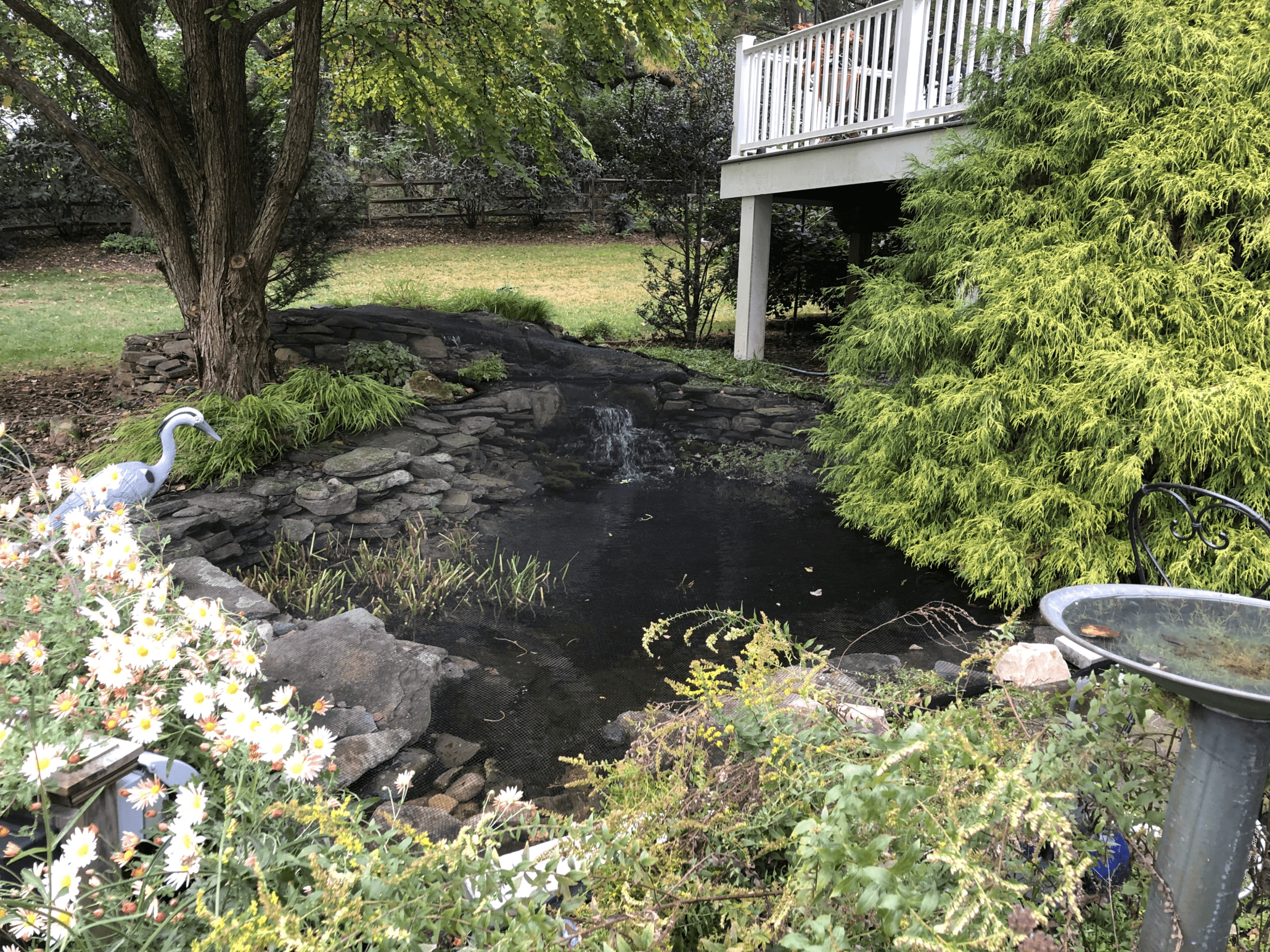
Need help with your Philadelphia Winter Pond questions? We have answers. Have you ever noticed that your pond water is clearer in the fall? This is typically due to cooler temperatures and full, lush plants. To keep your pond looking its best throughout the fall and winter season, follow our helpful, easy-to-follow Philadelphia Winter Pond Maintenance tips.
Winter Pond Care
- Prune yellowing leaves off all of your plants. Your lilies – tropical and hardy – should still be going strong, at least until the first heavy frost.
- Stop fertilizing plants when the weather becomes cooler. This lets the plants know the season is coming to an end.
- When the water temperature is around 50 degrees F, stop feeding your fish. If you continue to feed them, you might create health problems for your finned friends, since their digestive systems are beginning to slow down for the winter.
- As leaves falls from nearby trees, you’ll need to empty your skimmer’s debris net every day to keep up with the influx of leaves. Some leaves will undoubtedly sink to the bottom of the pond; try to remove as many as you can. However, a few left in the pond will give insects and frogs a place to over-winter.
- If you leave too much organic matter in your pond, the water may turn brown. If this happens, remove the excess debris and add activated carbon to clear the water.
- As the temperature gets colder and your plants expire, cut back the dead plant material and remove the tropicals. Cut back the cattails above the water level, or better yet, leave them up to see how magnificent they look in the winter.
- If you’re fortunate enough to live where it stays warm all year-round, you’re set for the winter.
Shutting Your Pond Down
- To shut your pond down, first unplug your pump and pull it out of the water. The pump should be stored in a frost-free location, submerged in a bucket of water to keep the seals from drying.
- If you have fish, a small re-circulating pump or pond aerator that bubbles at the water surface is necessary to oxygenate the water. In all but extremely low temperatures, the bubbling of the pump will also keep a hole open in the ice to allow for a gas exchange, keeping your fish alive. It is not necessary to oxygenate the water or keep a hole open in the ice if you don’t have fish.
- If your area experiences long periods of extremely cold weather, you may consider adding a floating pond heater and de-icer. Controlled by a thermostat, the unit only runs when the water temperature is at or below freezing, heats the water to just above that, and then shuts off again. Ask your installer or local supplier for products to help your pond during the winter.
- If you use a floating de-icer, place it away from the bubbler. The movement of the water from the bubbler can move the heated water away from the de-icer, making it run more than necessary.
- You can also choose to keep the waterfall running. This will require a little babysitting to make sure an ice dam does not form, which could cause water to run out of the waterfall’s basin. You will also still need to replace water loss so the pump can continue to function properly. This extra effort during the winter will reward you with the most beautiful ice formations and patterns around the falls and stream beds.
The most important thing is to have fun with your water feature all year long. Keep some of these key maintenance issues in mind, and it will be smooth sailing. For more information or any questions, reach out to us today.





